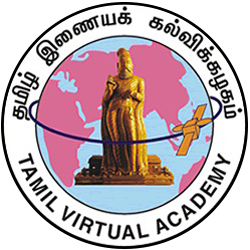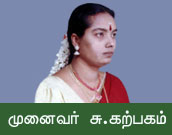Primary tabs
-
D06146 Lesson 6 Grammar texts on Dance
This lesson throws light on the various grammar texts on the art of dancing. The need to organize the basic movements in dance into progressive sequences and the efforts at defining the nuances and the techniques of dance, led to the composition of several treatises and books on the grammar of dance. Many of these ancient texts such as “Agathiyam”, “Sayantham”, “Seyittriyam” and “Mathivaanar Nadaga Tamil Nool” have disappeared. We learn of these books through the references made by the authors of “urainoolgal” and other literary texts. This lesson focuses on the four existing grammar texts on dance available to us. They are “Koothanool”, “Panchamarabu’, “Mahabarata Choodamani” and “Avinayadarpanam”. The lesson also highlights the theories on dance propounded in the epic “Silapathigaram”. “Koothanool” written by Saathanaar is a detailed exposition on the art of koothu, a form of dance - drama. The book falls into 9 sections. This book was retrieved from palm - leaf manuscripts and published by Sa.Thu.Su. Yogiyaar. The first section of “Koothanool” is called “Suvai nool”. “Panchamarabu”, another important text on dance, is believed to have been written during the times of Adiyarkku Nallaar, the “uraiaasiriyar” of “Silapathigaram”. The term “pancha” means 5 and “marabu” means tradition. Since this text discusses the tradition of “isai”, “vaakiyam”, “talam”, “nrittam” and “abinayam”, the 5 aspects of dance, it is called “Panchamarabu”. This book comprises 241 verses. “Mahabarata Choodamani” is based on the north Indian text “Mahabarata”. It is made of 5 chapters, each dealing with the various aspects of dance. “Avinayadarpanam” is a translation of the north Indian text “Abinayadarpana” written by Nandikeswarar. This book, translated by Veeraraghavayyan, explains the nuances of dance through 129 verses. The “Arangettru Kathai” in “Silapathigram” not only contains a description of the performance of Madavi, but also includes a detailed exposition of the various aspects of dance.


